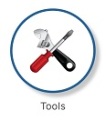A VOPE is usually governed by a Board selected by the VOPE members from nominated individuals within the organisation. The constitution for the VOPE typically contains an explanation of how the leadership and governance structure works. It usually outlines eligiblility criteria for Board membership and procedures for nomination, voting, and election to these positions, including the term of office for each position. The voting administration process should manage the nomination,voting and appointment of Board members.
 Description
Description
The election and voting process can be administered during a members meeting, such as an AGM, however since many VOPEs have geographically dispersed members, they opt to administer their elections electronically using online voting administration systems. The elections process usually consists of four steps.
- Nomination
- Confirmation of Nominations
- Voting
- Appointment of the Board members
For voting administration systems, a VOPE generally has two options available. The election and voting process can be conducted during a membership meeting, such as an AGM, where members can nominate and vote with the show of hands, ballot papers or electronic input devices. Nominations can be made and confirmed during the meeting or before the meeting. If the nomination process is completed before the meeting, ballot papers can be printed for voting. In paper-based voting systems, votes are cast and counted by hand.
Alternatively, these systems can include an electronic input device and votes are counted electronically. Online voting (also known as e-voting) uses electronic systems to aid in the call for nominations, casting and counting votes. A list of members should be available to enable members to have information on who can be nominated. Once the nomination period has expired the nominated candidates should confirm that they are prepared to serve as a Board member. At this point information about the candidates can be published on the website or through relevant email communication. Once the voting is declared open, members can cast their votes electronically using computers / smart phones up to the time the voting is closed. The system should have additional functionality to ensure that members are eligible to vote and can vote only once. Votes are counted electronically, the results published and members appointed. All this can be done via the VOPE website if the functionality is included in the design of the website.
The two administration systems (supervised or remote) have different costs. Administering the voting through a meeting may appear low cost but more time and effort is required in supervising and counting votes. Members may also incur travel costs. An e-voting system may require an upfront fee but can save time in administration and counting. – so the total cost of operating the voting administration system needs to be considered right from the start.
The voting administration system should allow the VOPE to:
- Provide information about the members that can be nominated (members list)
- Email / notify members of the nomination period and process
- Open the nomination process
- Allow members to nominate (checking against the membership database)
- Store the nomination information
- Close the nomination process
- Notify potential candidates and ask whether they are willing to stand for the elections (checking against the membership database)
- Provide information on nominated candidates
- Email / notify members of the voting period and process
- Open the voting process (checking against the membership database, allowing only active members to cast the determined number of votes)
- Store voting information
- Analyse and verify voting per nominee to confirm appointments
- Publish results of voting (in a report, excel sheet)
- Notify new Board members and confirm acceptance
- Notify VOPE membership of confirmed appointees.
It is imperative that the steps for managing the system is clearly documented, for transparency and since turnover in staff is likely. Standard operating procedures for administering the voting process should be developed — clearly stipulating tasks, processes, roles and responsibilities.
Resources
Here are some software that may be helpful
* Simply Voting is a web-based online voting system that will help you manage your elections easily and securely. Simply Voting: Online Election Perfection. http://www.simplyvoting.com/. Once off or yearly fee dependent on number of members.
* Votenet offers voting solutions for various types of organizations. Votenet Solution: Online voting. http://www.votenet.com/online_voting.cfm . Proposal of costs can be requested online
* Helios offers an open source verifiable online voting system. Helios: Trust the Vote. https://vote.heliosvoting.org/
 Examples
Examples
Here are some examples of Webpages and online nomination forms:
- AES created a Board nomination form for their 2013/2014 board elections.
AES: Call for nominations for Positions for the Board of AES for year 2013/2014.
-
The Community of Evaluators has documented the Board Elections guidelines.
Community of Evaluators: Governing Board Elections Guideline on the Election Process
- The European Evaluation Association published the results of their most recent elections on their website.
EES Board Elections 2014
http://www.europeanevaluation.org/about-ees/ees-board-elections-2014.htm
FRENCH EXAMPLES
Exemples français des processus de vote et les règles:
SQEP Conseil d’administration – Société québéc
Ce site propose un tas de documents pour l’organisation de l’assemblée générale annuelle. Une partie des documents sont liés au processus électoral.
Assemblée générale annuelle 2014 – Amnistie internationale
Ceci est un exemple d’un document à envoyer à tous les membres pour que les personnes intéressées à être en mesure de communiquer leur intention de devenir membre du sanglier:
Conseil d’administration : déclaration candidature à un poste d’administrateur
Invitation to give Feedback
Have you used any of the resources recommended in this post? Tell others what you thought about it by leaving a comment below.
Acknowledgements, Licensing, Attributions
Full details about the acknowledgements, licensing and attributions of this content here.
Disclaimer
Note that depending on the size, development phase and purpose of your VOPE, the material presented in this post may need to be contextualised for your specific purposes. Also take note of the full toolkit disclaimer here.















